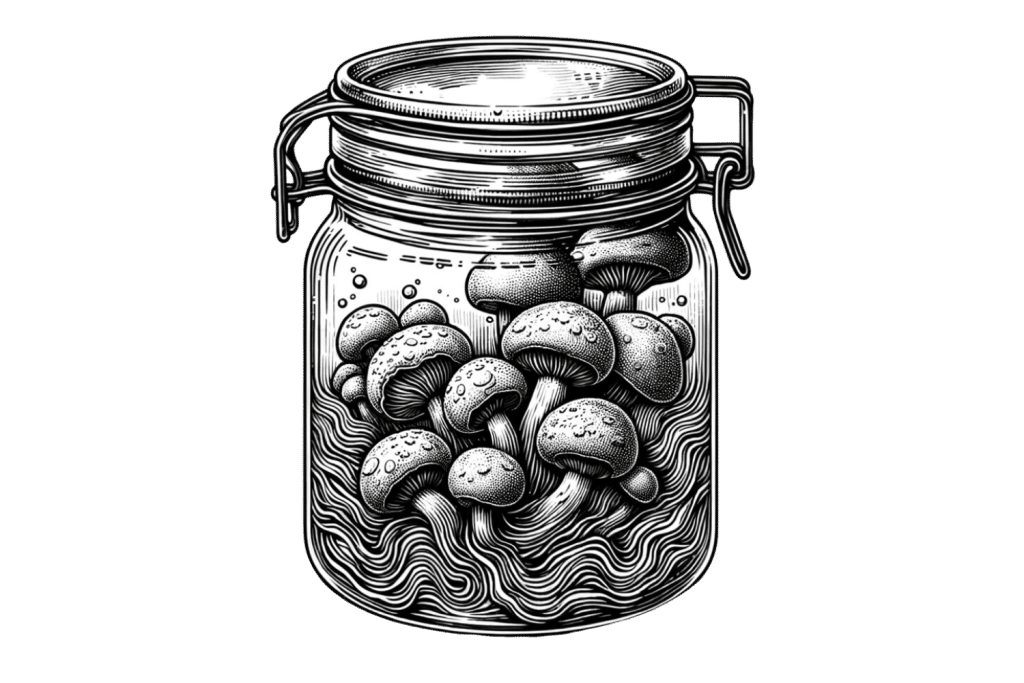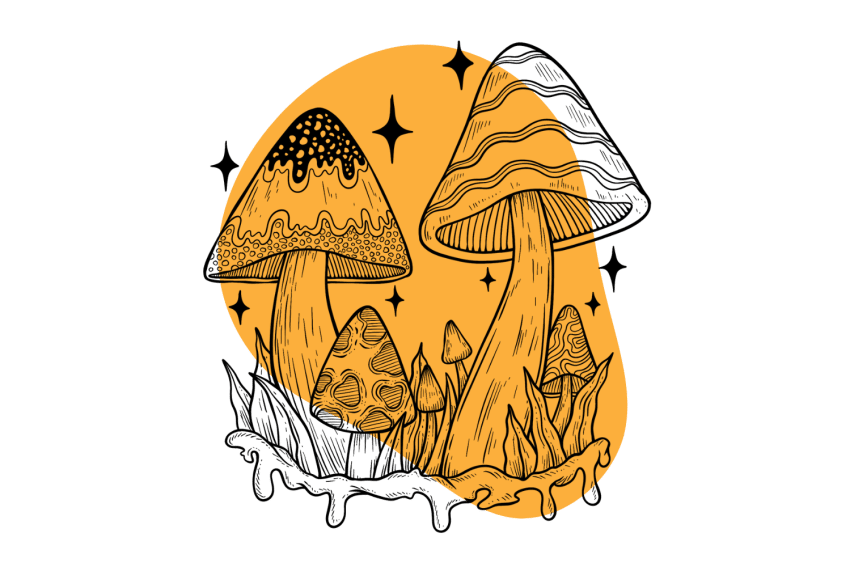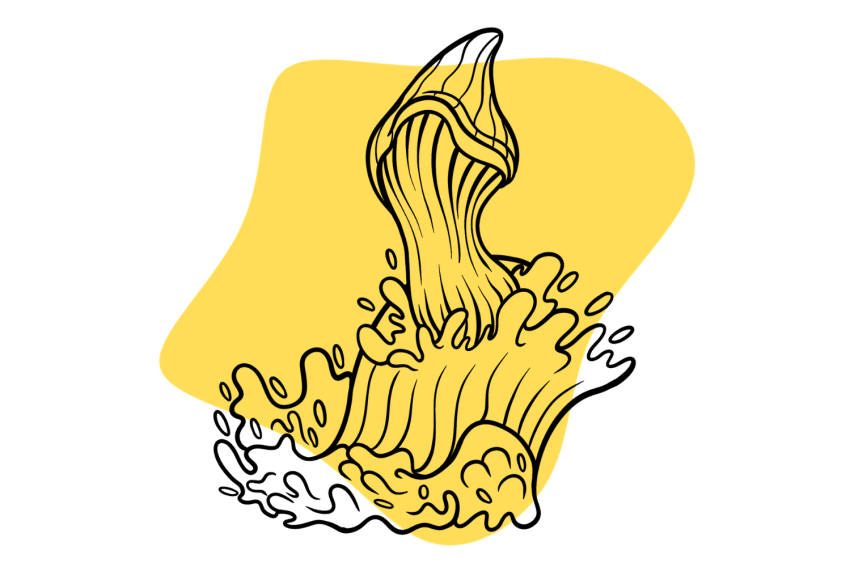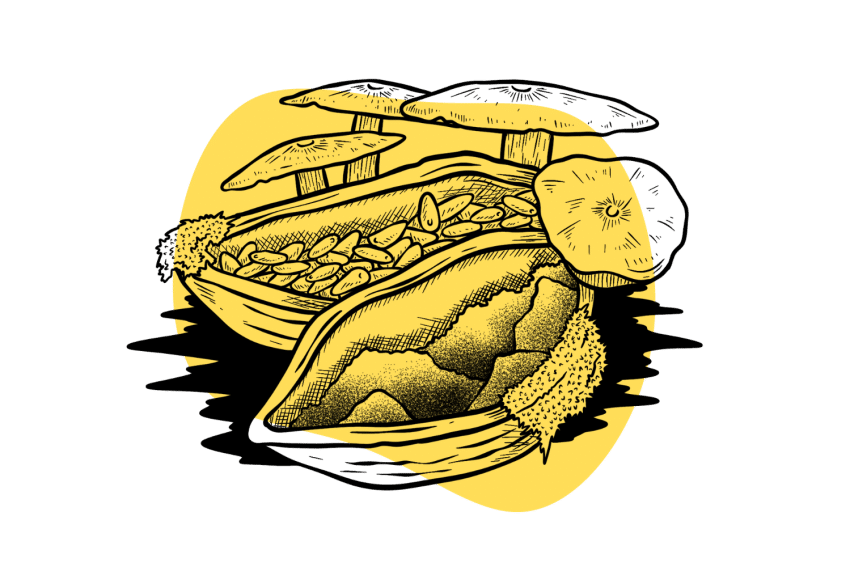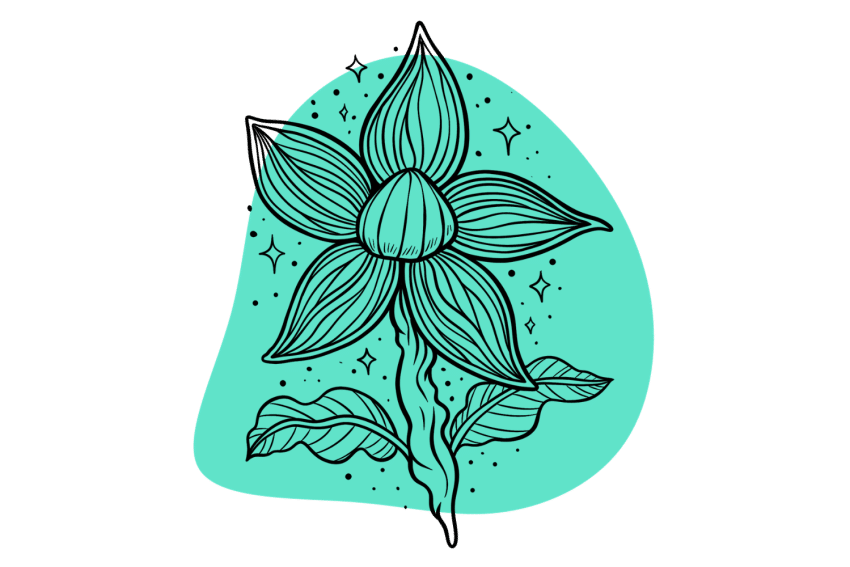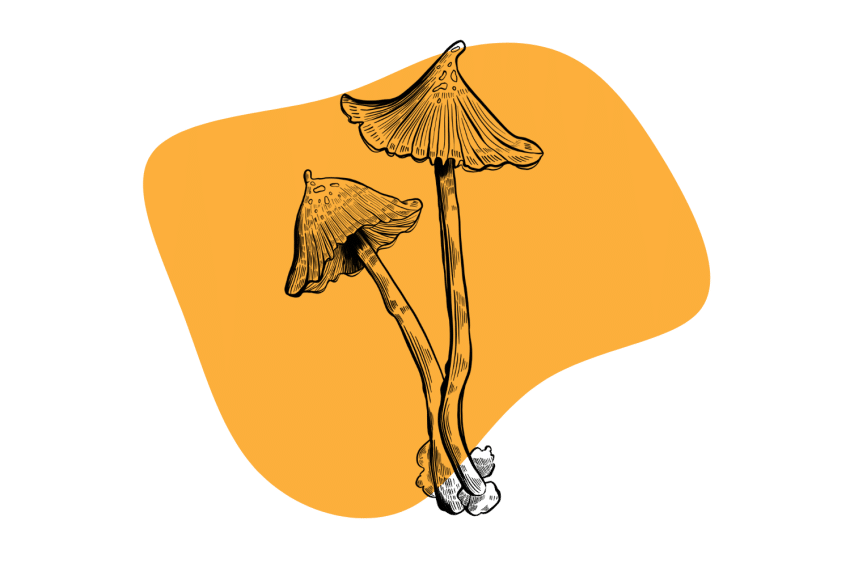How Long Do Mushrooms Last In the Fridge?
From button mushrooms to magic mushrooms, here’s how to make them last as long as possible.
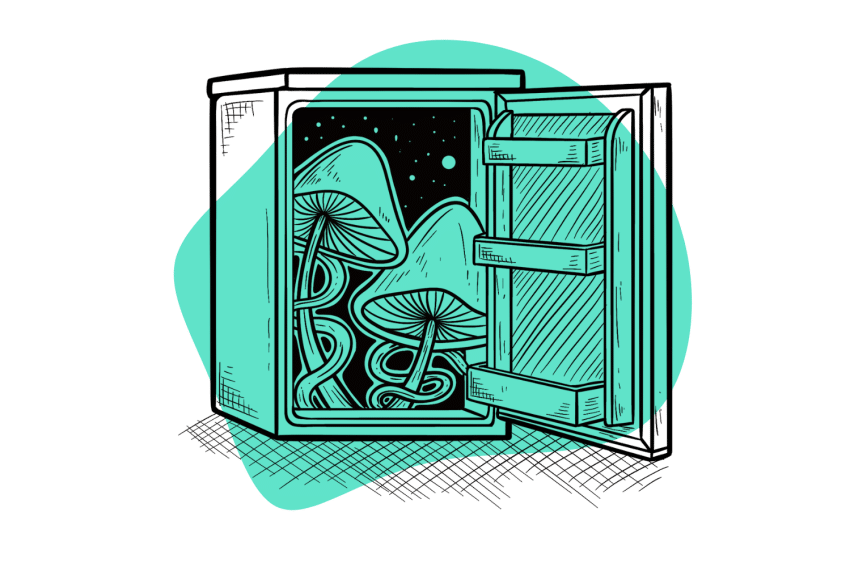
Generally speaking, fresh mushrooms will last in the fridge for up to seven days. However, the type of mushrooms, how they’ve been prepared, and how they’re sourced will affect their refrigerator life.
There are a number of preservation techniques that improve the shelf life of mushrooms. Preserved mushrooms — such as those that have been dehydrated or frozen — can last for several years before turning bad.
In this article, find out the following:
- How long store-bought mushrooms last in the fridge
- How long home-cultivated mushrooms last in the fridge
- How long wild (foraged) mushrooms last in the fridge
- How to tell if mushrooms have gone bad
- How to preserve mushrooms to improve their shelf life
Fresh Mushroom Species Lifespan in the Fridge
Let’s explore the most common mushroom species you’re likely to come across and how long they should remain fresh in the fridge.
Please note that your mileage may vary depending on the temperature of your fridge (our baseline is 3ºC or 35ºF), cleanliness (moldy foods in the fridge will spread to your mushrooms), and humidity levels (higher humidity will cause your shrooms to mold faster).
Let’s start with our favorite shrooms — the magical ones.
1. Magic Mushrooms
The most common magic mushroom species you’re likely to encounter is Psilocybe cubensis — but other species like Panaeolus cyanensis (blue meanies), Psilocybe tampanensis (truffles), Psilocybe semilanceata (Liberty Caps), and Psilocybe baeocystis can be foraged outside in most parts of the world too.
Freshly harvested Psilocybe cubensis shrooms will last up to 7 days in the fridge when stored in paper bags but deteriorate quickly.
Smaller species, such as those in the genus Panaeolus, tend to rot more quickly — these mushrooms last closer to 3 or 4 days when stored in the fridge.
Magic truffles from Psilocybe tampanensis or Psilocybe mexicana tend to last much longer — usually about a week and a half to 2 weeks in the fridge, and much longer in the freezer (6 months to 1 year).
Most people will dry their magic mushrooms directly to prepare them for storage so they don’t have to stress about eating them before they go bad.
Learn how to store magic mushrooms here.
Related Guides: Magic Mushrooms 101 | How to Make Mushroom Tea | Where to Find Magic Mushrooms in the Wild
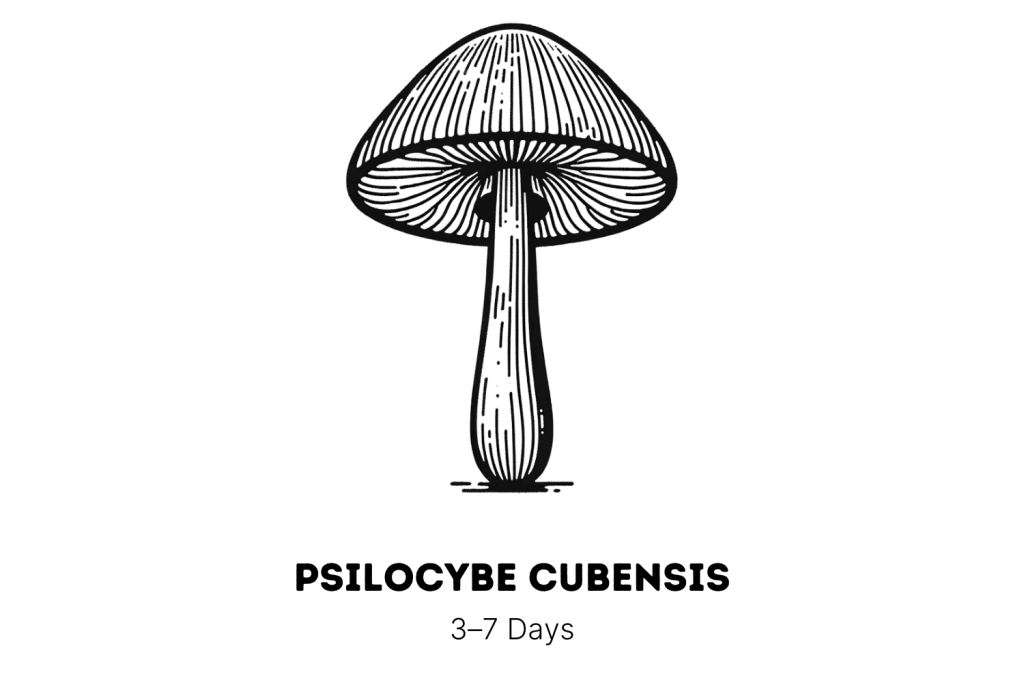
2. Amanita muscaria (Fly Agaric Mushrooms)
The Amanita muscaria mushroom is one of the most recognizable mushrooms on Earth 🍄.
This species has unique psychoactive and oneirogenic effects when consumed — however, it’s critical that they’re never consumed fresh.
Amanita muscaria mushrooms will remain viable in the fridge for 3–7 days but should always be dried under gentle heat prior to consumption. It’s best to dry these mushrooms as soon as they are harvested.
Related Guides: Do Amanita mushrooms contain psilocybin?
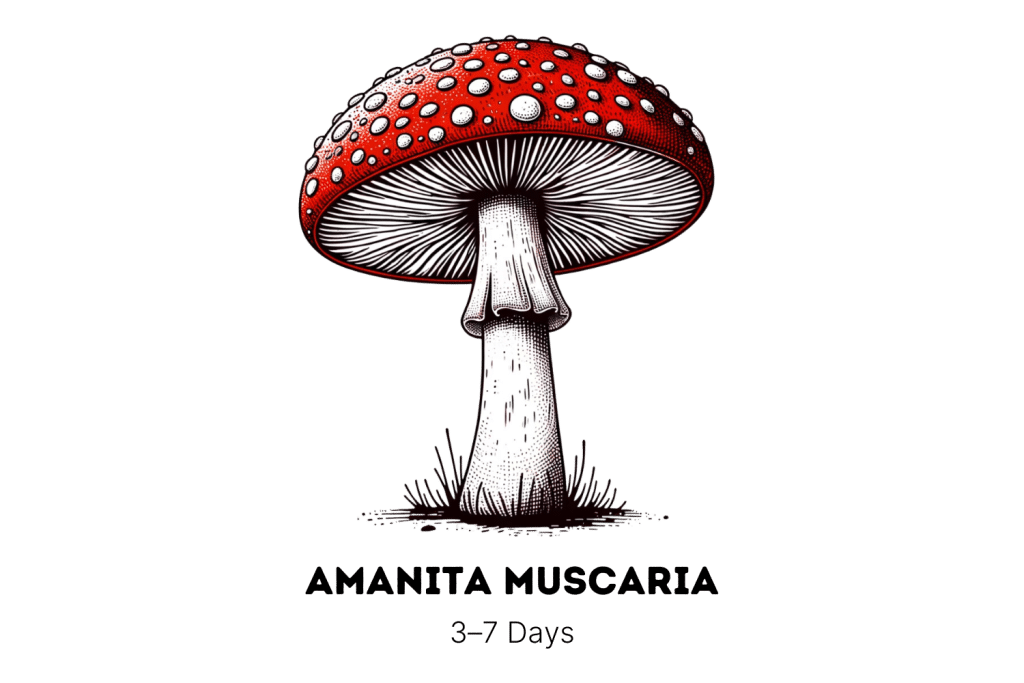
3. Button Mushrooms, Cremini, & Portabello (Agaricus bisporus)
Button mushrooms, cremini, and portabello are all super common grocery-store varieties that all come from the same species. The young fruits are sold as button mushrooms, creminis are a brown-capped variety, and portabellos are the full-grown, brown-capped versions.
Agaricus bisporus mushrooms have a shelf life of 4 to 7 days when stored under ideal conditions in the refrigerator. These mushrooms often come in plastic packaging, which can cause the mushrooms to sweat. Taking them out of this packaging and placing them in a paper bag or open container will prolong their refrigerated shelf life.
The biggest threat to these mushrooms is humidity, so it can help to keep some paper towel with your mushrooms to absorb excess moisture.
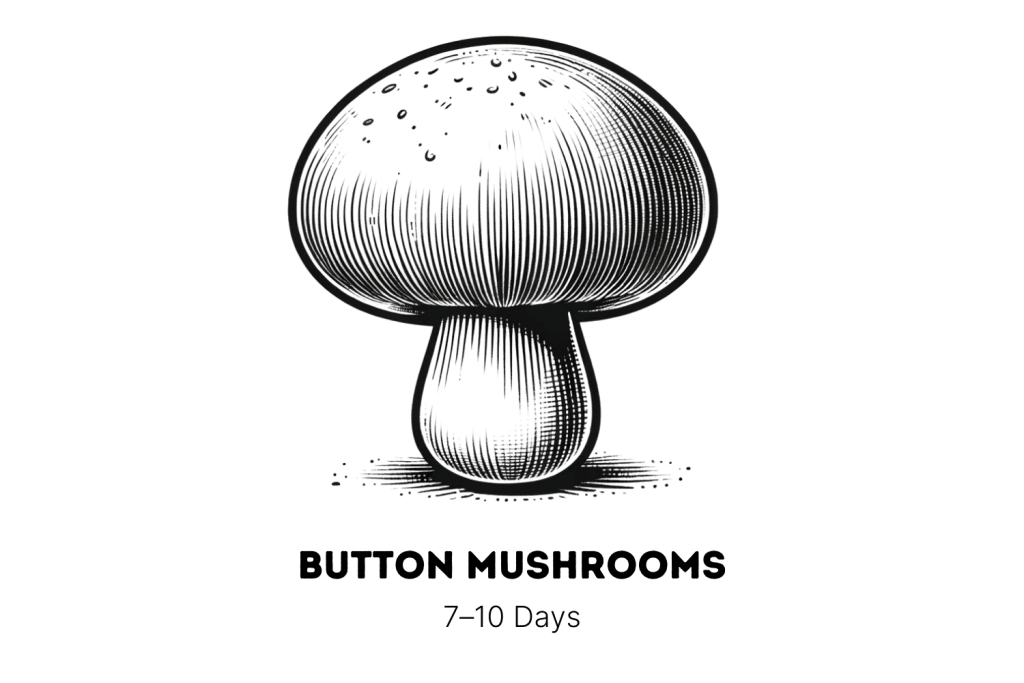
4. Shiitake Mushrooms (Lentinula edodes)
Shiitake is a popular East Asian mushroom that’s showing up more and more in Western grocery stores. These large mushrooms are considered edible medicinals that help protect against cell damage, boost the immune system, and help fight inflammation.
Unfortunately, shiitake mushrooms from the grocery store — at least the ones I’ve found — don’t appear to be particularly fresh. You can expect them to last for 4 or 5 days, provided they’re removed from any plastic packaging and stored in an open paper bag.
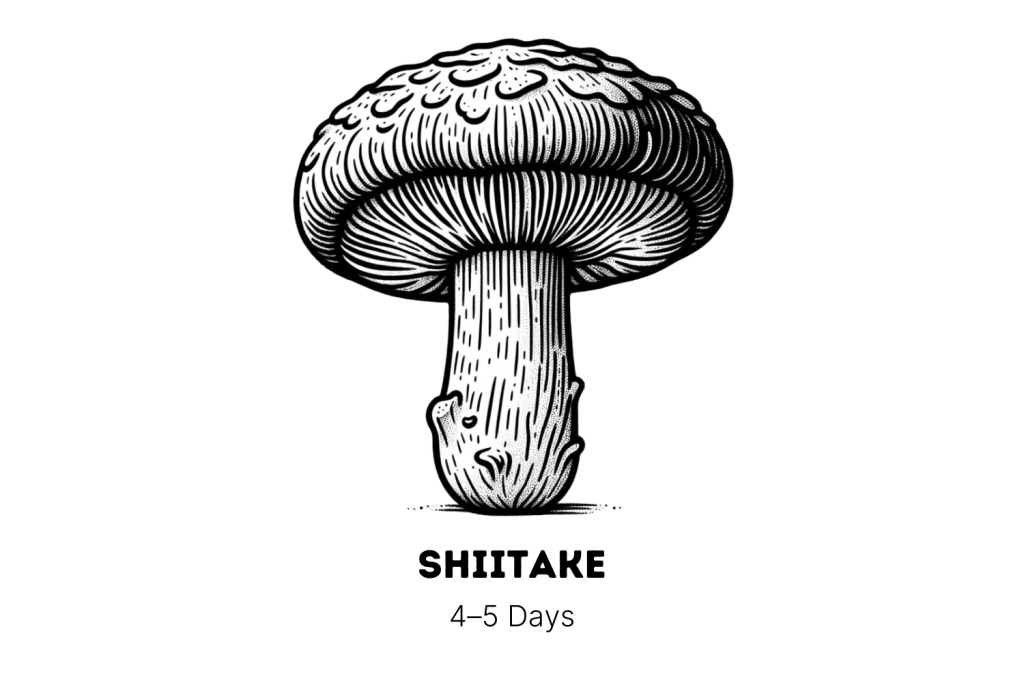
5. Oyster Mushrooms (Pleurotus spp.)
Oyster mushrooms are a popular gourmet mushroom often found in grocery stores. These wood-loving mushrooms tend to last 5 to 7 days in the fridge when stored in an open container or paper bag.
Oyster mushrooms that are grown at home tend to have a longer shelf life.
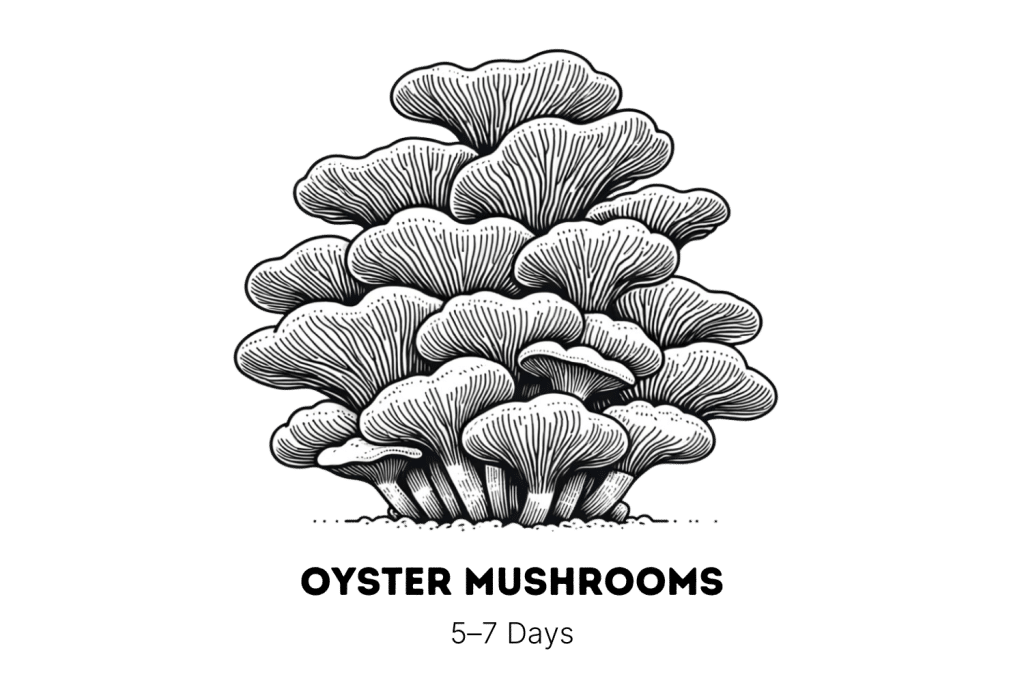
6. Enoki Mushroom (Flammulina filiformis)
Enoki mushrooms are small, pin-like mushrooms that grow in tight clusters. These small, delicate mushrooms are popular in Asian cuisine and are sold in grocery stores. Due to their small size, enoki mushrooms lose moisture quickly, meaning if stored incorrectly, they can become floppy and lose their “bite.”
Enoki mushroom storage breaks the rules compared to other mushrooms. They should be wrapped in kitchen paper and stored in an airtight plastic bag or container in the coldest part of the fridge. If stored like this, enoki mushrooms will last more than 14 days.
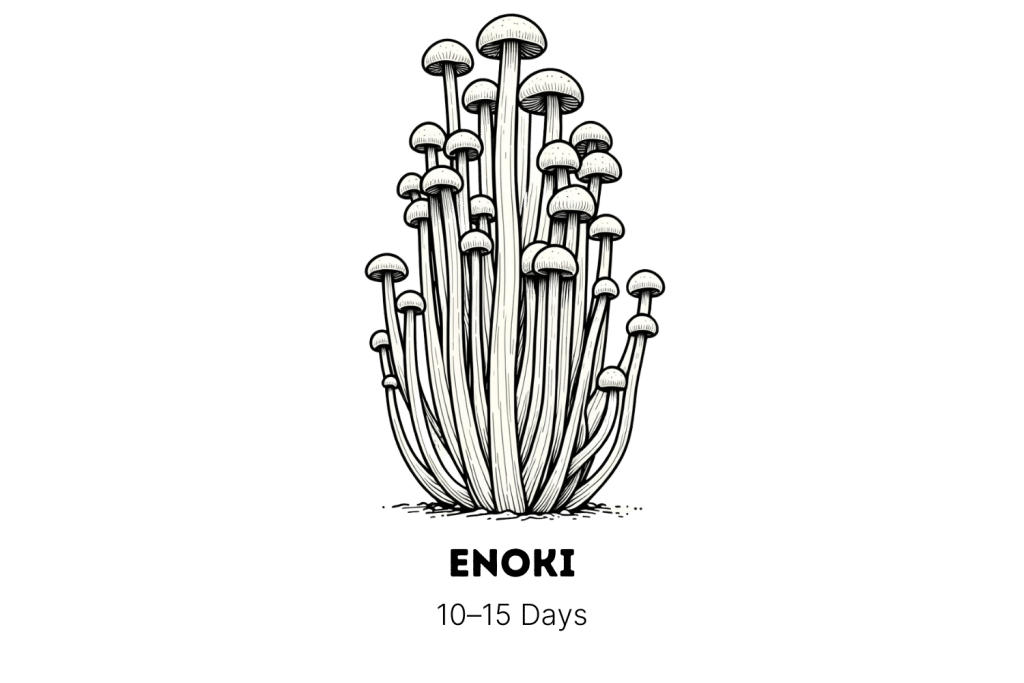
7. Wine Cap Mushrooms (Stropharia rugosoannulata)
Wine cap mushrooms are a favorite among home mushroom cultivators. Although they can grow both indoors and outdoors, it’s most common to grow them in vegetable beds outside.
If harvested at the perfect time and are free from contaminants, they will last in the fridge for 7 to 10 days in a paper bag or open container.
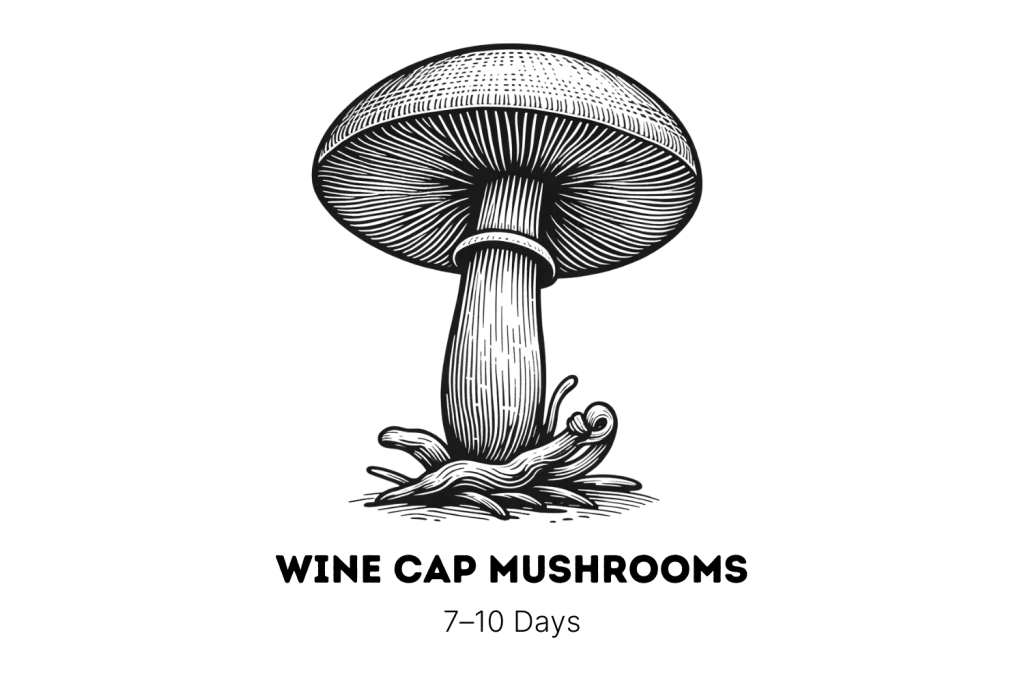
8. Pioppino Mushrooms (Agrocybe aegerita)
Pioppino mushrooms are a popular choice among home cultivators because they’re easy to grow, taste fantastic, and have a brilliant shelf life.
If the mushrooms are cleaned up properly (without water) and stored in an open paper bag in the coolest part of the fridge, pioppino mushrooms will last for 14 days or more.
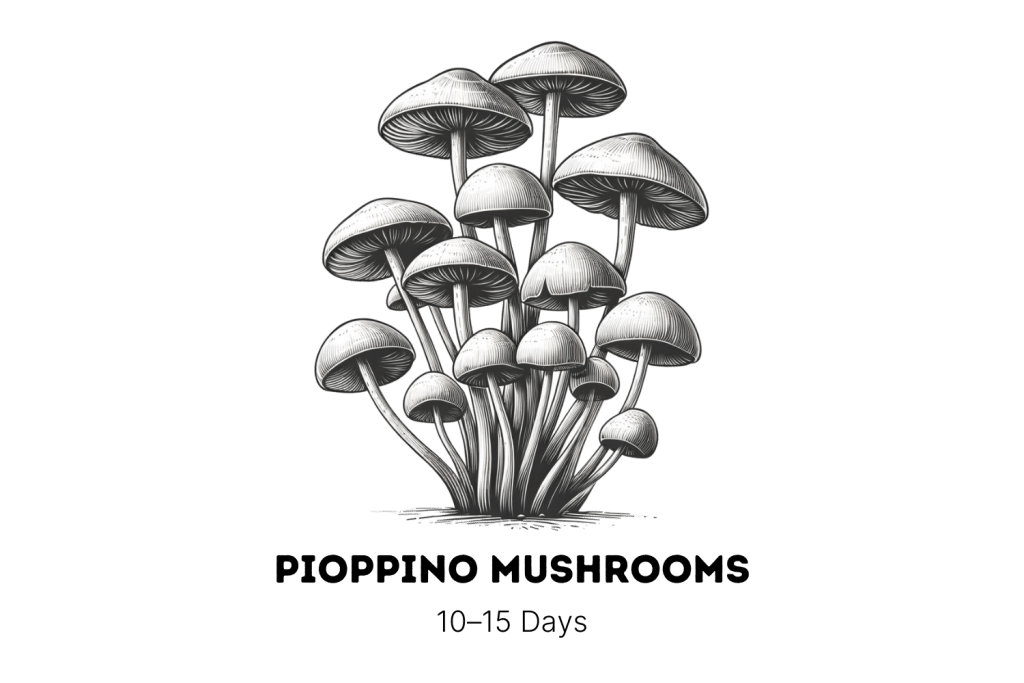
9. Lion’s Mane Mushrooms (Hericium erinaceus)
Lion’s mane is a popular medicinal mushroom that can be cultivated at home. The hair-like teeth of this mushroom are delicate — because of this, they don’t last particularly well in the refrigerator.
You can expect lion’s mane mushrooms to last 5 to 7 days when stored in an open container in the fridge.
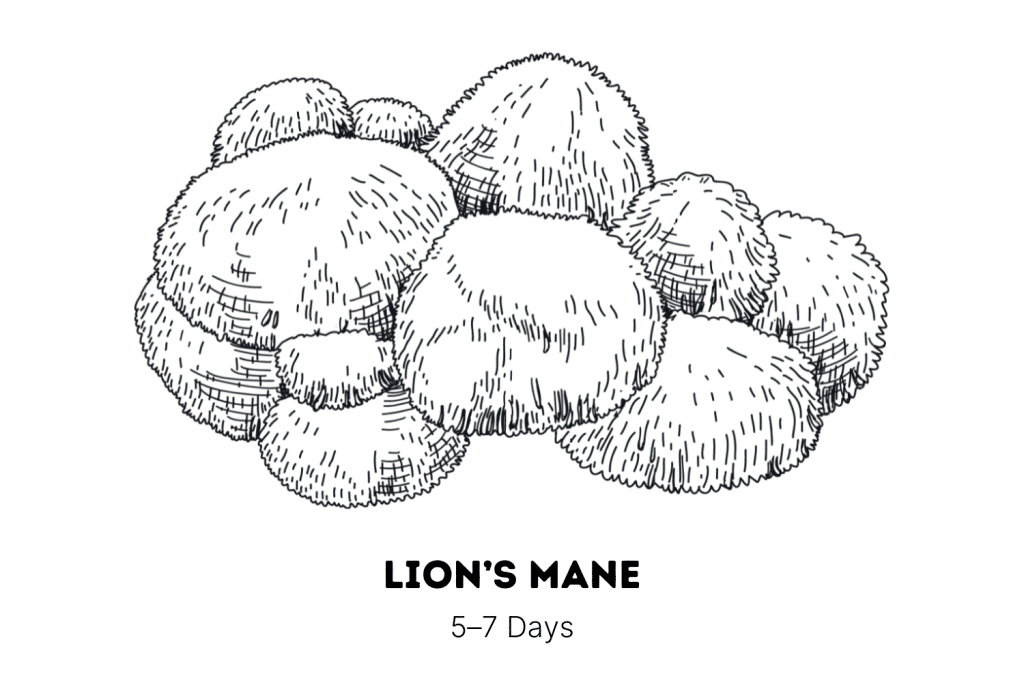
10. Chanterelle Mushrooms (Cantharellus cibarius)
Chanterelle mushrooms are some of the most sought-after wild edibles on the planet. You can’t cultivate these mycorrhizal fungi in an artificial environment — they must be collected from nature.
Raw chanterelles are best stored in paper bags. Brush the mushrooms clean before storing them in the fridge, but don’t wash them with water.
When stored this way, chanterelle mushrooms will last up to 10 days in the fridge. However, they’re best consumed within 3 days if you want to experience the full flavor of the mushrooms.
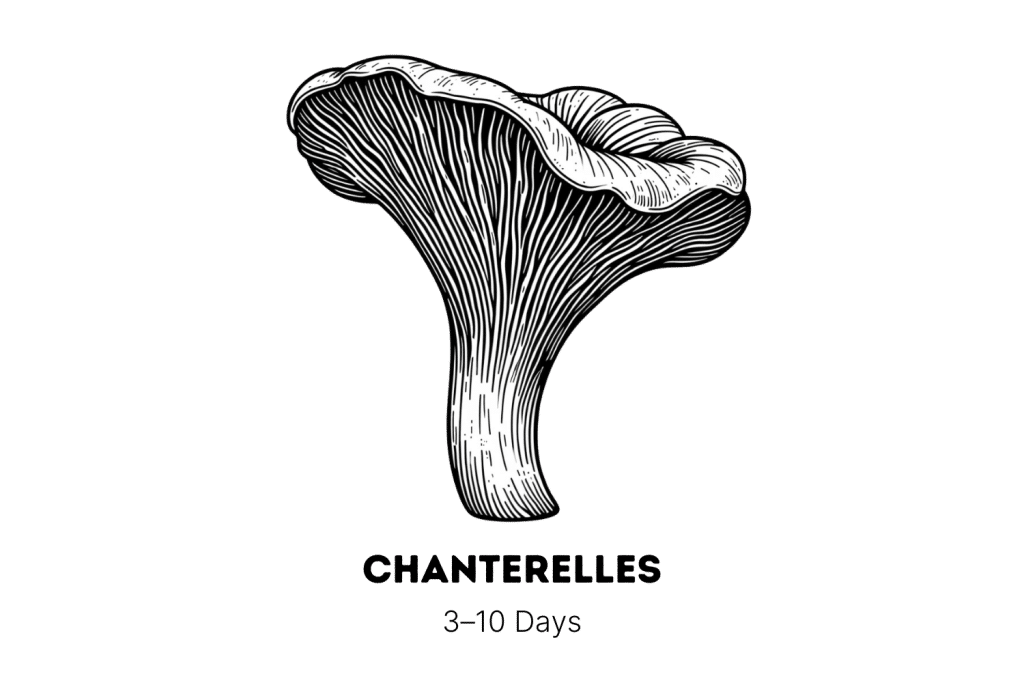
11. Porcini Mushrooms (Boletus edulis)
Porcini mushrooms are wild mushrooms that grow in both deciduous and coniferous woodlands. These large, spongy mushrooms have a rich umami flavor and are common in Italian cuisines.
Fresh porcini mushrooms don’t keep particularly well in the refrigerator. You can expect porcini mushrooms to last up to 3 days if stored in paper bags. They’re also prone to larva infestation, so split them before storage to check the stem and cap for insects.
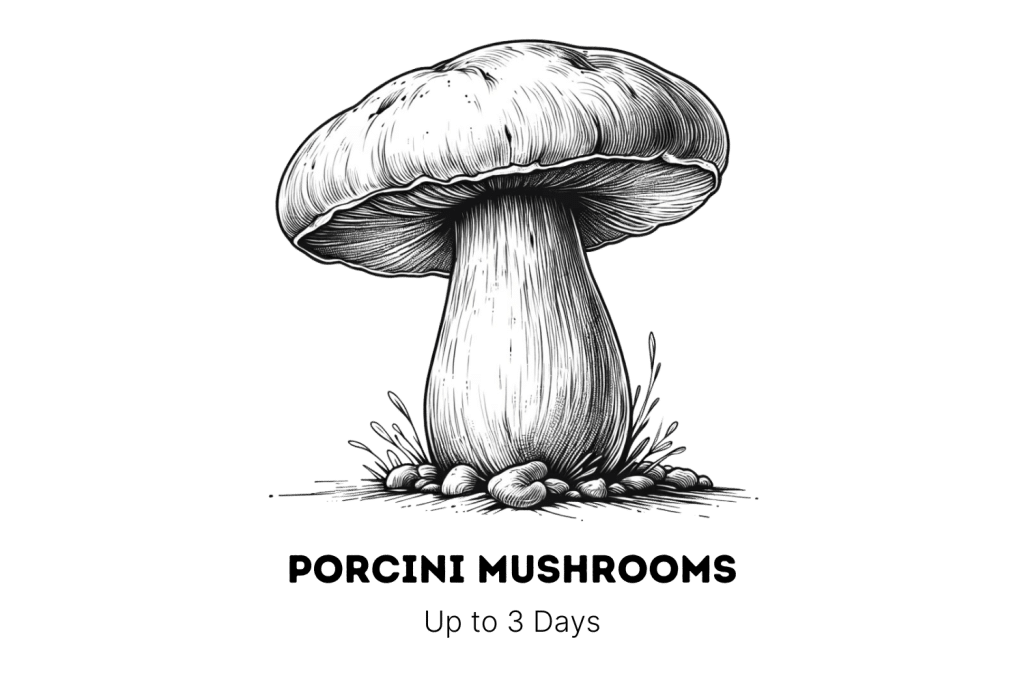
12. Morel Mushrooms (Morchella esculenta)
Morels are a popular spring/summer mushroom that pops up in forests across the temperate zones of the northern and southern hemispheres.
These alien-looking mushrooms are best stored in paper bags in the coolest part of the fridge.
They will stay fresh for up to 8 days but are best eaten in under 5 days before their texture and taste degrade.
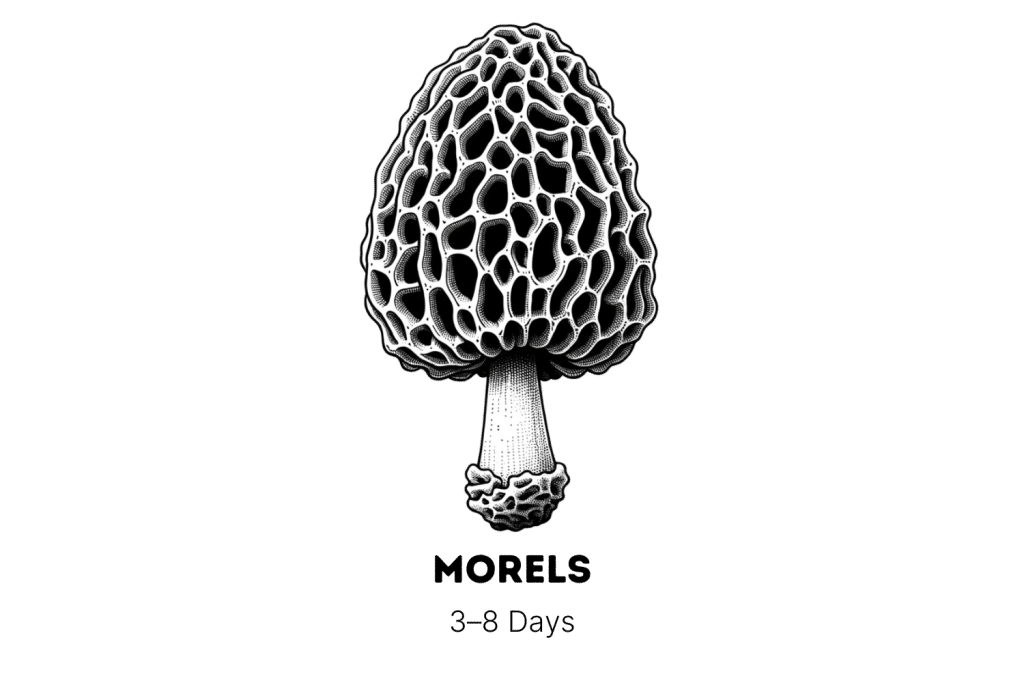
13. Chicken of the Woods (Laetiporus sulphureus)
Chicken of the Woods is a crazy-looking polypore fungus that gets its name for its meaty texture and rich umami flavor. It grows in large clusters on (mostly) deciduous wood.
Provided these large mushrooms are collected fresh, they will last in the fridge for 7 to 10 days.
Brush them clean and store them on a paper-lined tray or open paper-lined container — this will prevent the mushrooms from sweating.
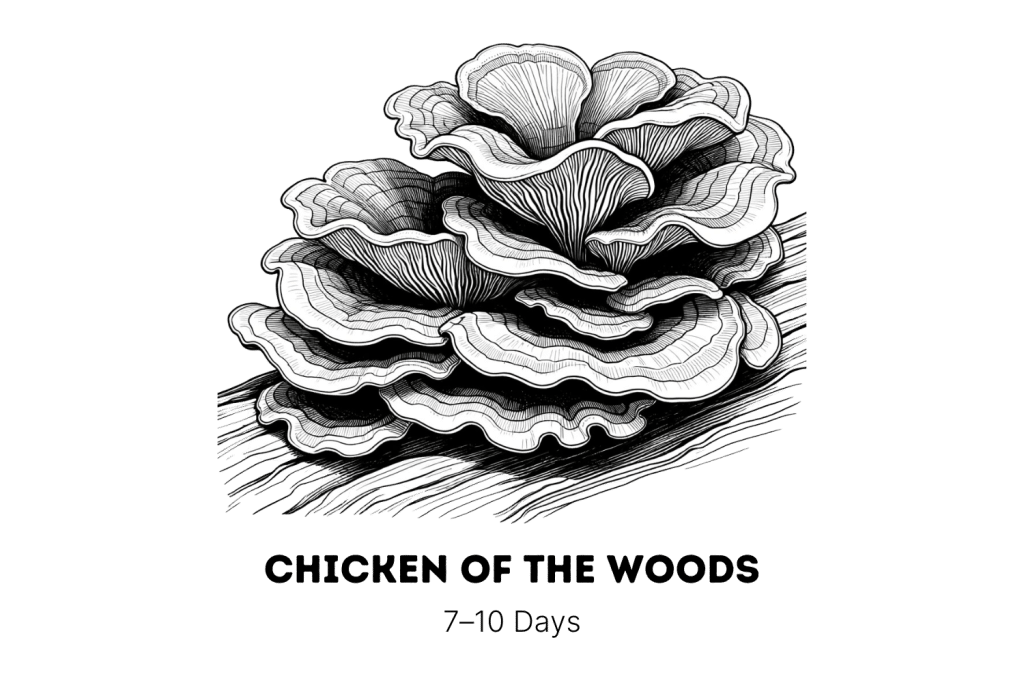
14. Hedgehog Mushrooms (Hydnum spp.)
Hedgehog mushrooms are a fantastic wild edible that grows in coniferous and mixed woodlands across the globe during the autumn months.
Hedgehog mushrooms will keep in the fridge for up to 7 days.
However, they can be prone to infestation — many people scrape the teeth out from under the cap to remove any insects or larvae.
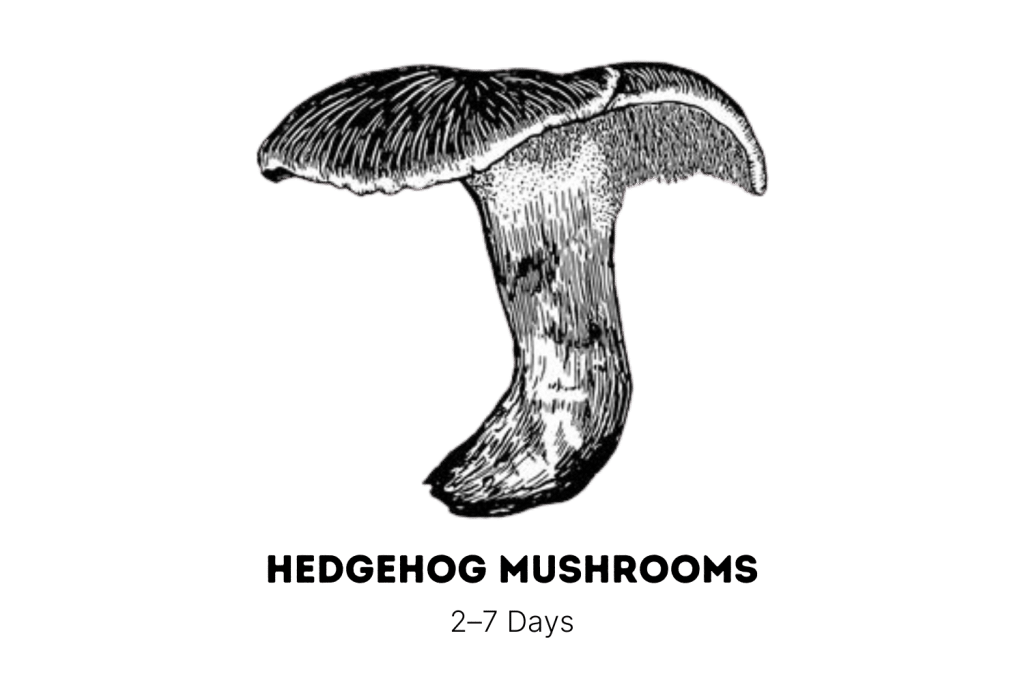
How To Tell if Mushrooms Have Gone Bad
The quality of mushrooms can quickly deteriorate, even in the fridge. The best way to prolong their life is to store them properly — most of the time, this involves a paper bag or open container to promote airflow and reduce moisture build-up. However, even correctly stored mushrooms will go bad sooner or later.
Here’s how to check if your mushrooms have gone bad:
- Visual Inspection — Fresh mushrooms should be uniformly colored. If any dark or slimy-looking spots appear, it’s a sign they’ve started to spoil. Some mushrooms may wrinkle or shrivel up as they go bad; if you see this, they’re starting to turn. If any white, green, or black mold and/or “fuzz” have appeared on the mushrooms, they aren’t safe to eat.
- Smell — Fresh mushrooms usually have a mild, earthy aroma. Other wild species may smell nutty or fruity. If they develop a foul or unpleasant odor, it clearly indicates that they have gone bad.
- Texture — Fresh mushrooms should have a firm texture. If they become soft, mushy, or slimy, they aren’t good to eat.
- Taste — If your mushrooms pass the visual, smell, and texture tests but you’re still unsure of their freshness, cook and taste a small sample. Discard them if they taste off, bitter, or have an unusual flavor.
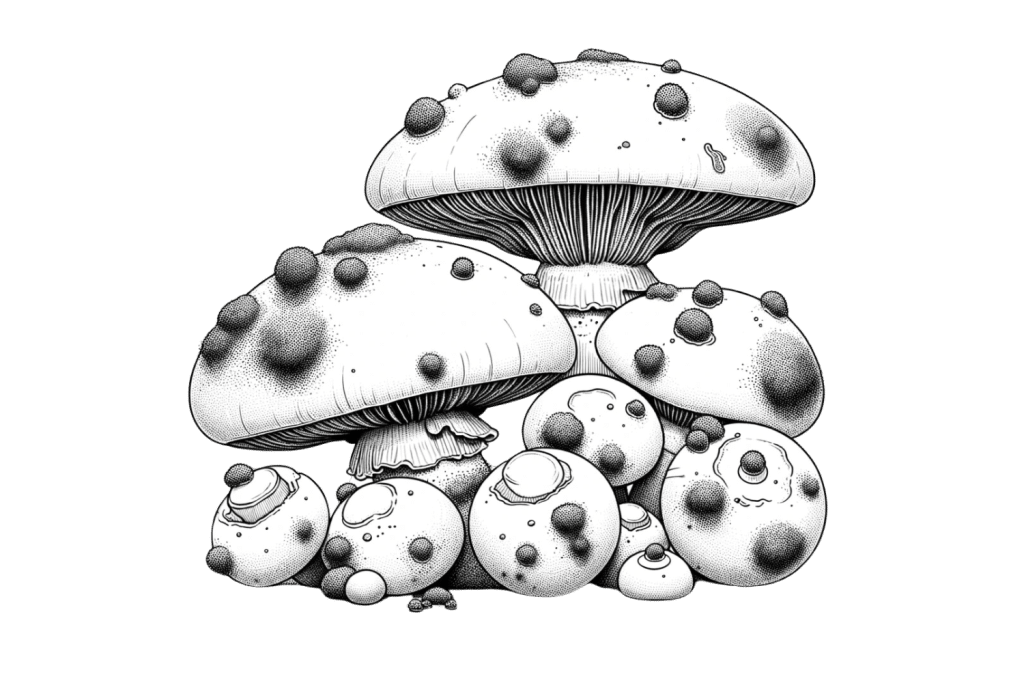
How To Preserve Mushrooms to Increase Their Shelf Life
Here are a few tips to make your mushrooms last even longer. The fridge is handy, but there are better ways.
1. Dehydration
Dehydrating mushrooms removes all the moisture from the flesh, inhibiting the growth of bacteria and mold.
To dehydrate mushrooms, wipe or brush them clean and arrange them on the trays of a dehydrator so they aren’t touching. Dehydrate them at a low temperature for several hours until completely dry. You know they’re dry when they snap cleanly with an audible crack.
Dehydrated mushrooms will last for more than a year when stored in airtight containers in a cool, dark place. To use them in cooking, rehydrate them first by soaking them in warm water for 20 to 30 minutes.
Related: The Art & Science of Drying Magic Mushrooms: Your Step-By-Step Guide
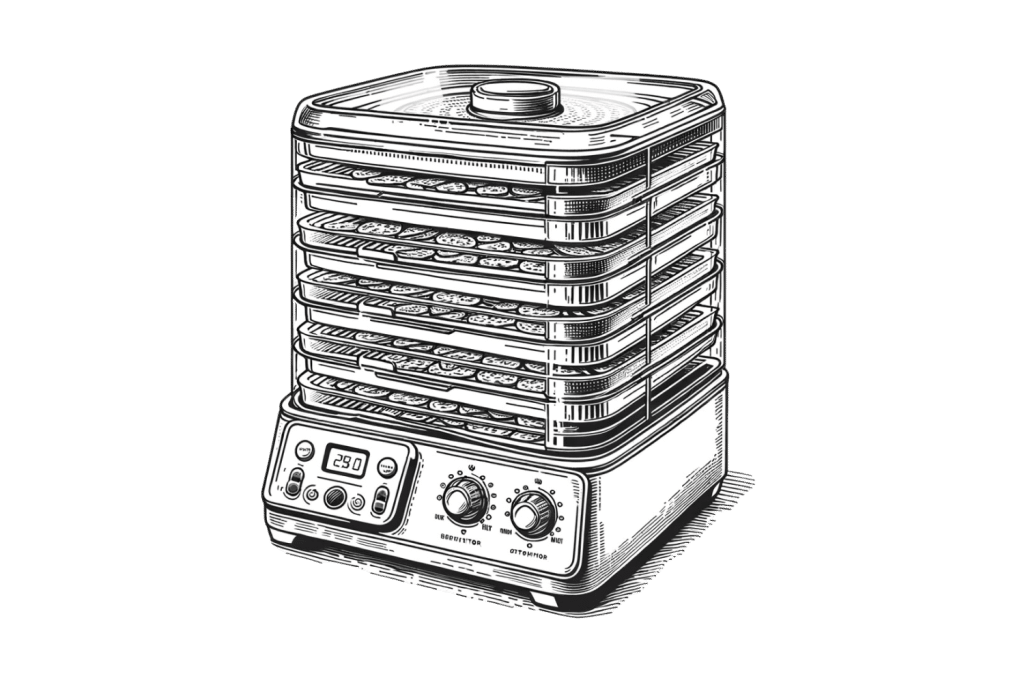
2. Freezing
Freezing mushrooms is another effective way to preserve them. They will last for six to 12 months before the flavor starts to decline.
If you want to freeze them, first clean, slice, and blanch the mushrooms in boiled water for around one minute. Then, transfer them to an ice bath to stop the cooking process.
Pat the mushrooms dry and lay them on trays in the freezer until completely frozen. From here, the frozen mushrooms can be portioned into separate bags and stored in the freezer.
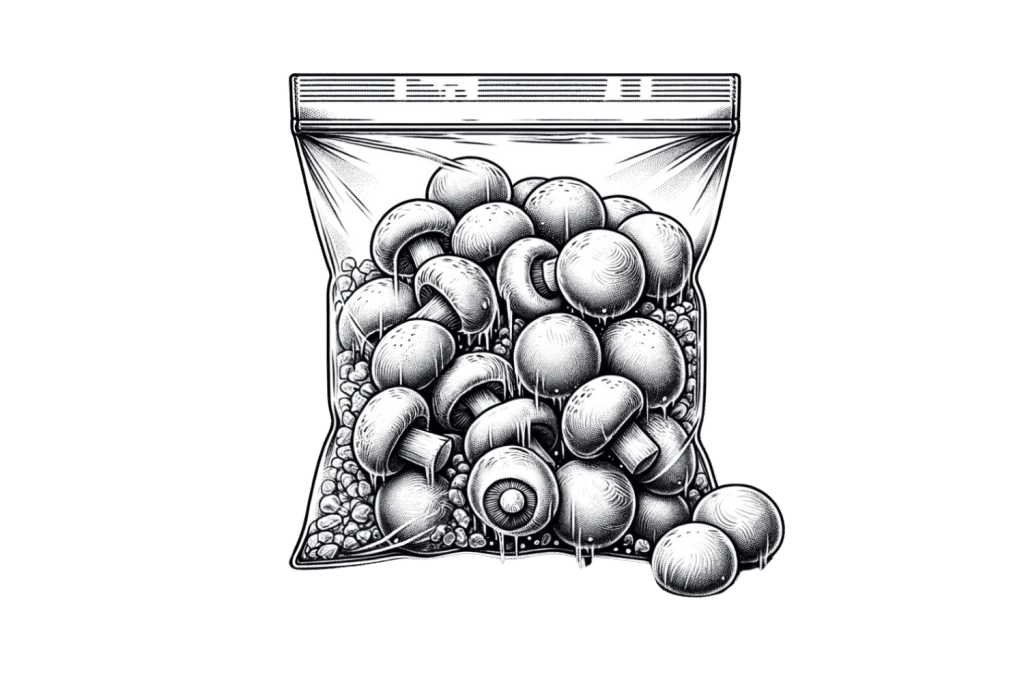
3. Pickling
Pickling is a tasty way to preserve mushrooms. It also alters their flavor, making them a great addition to cold and hot meals.
To pickle mushrooms, they must be cleaned and sliced before submerging in a simple pickling brine made from vinegar, water, sugar, salt, and your choice of spices and herbs. The pickled mushrooms (with the liquid completely covering them) must be stored in sterile, airtight jars.
Mushrooms that are pickled this way will last in the fridge for several weeks before spoiling.
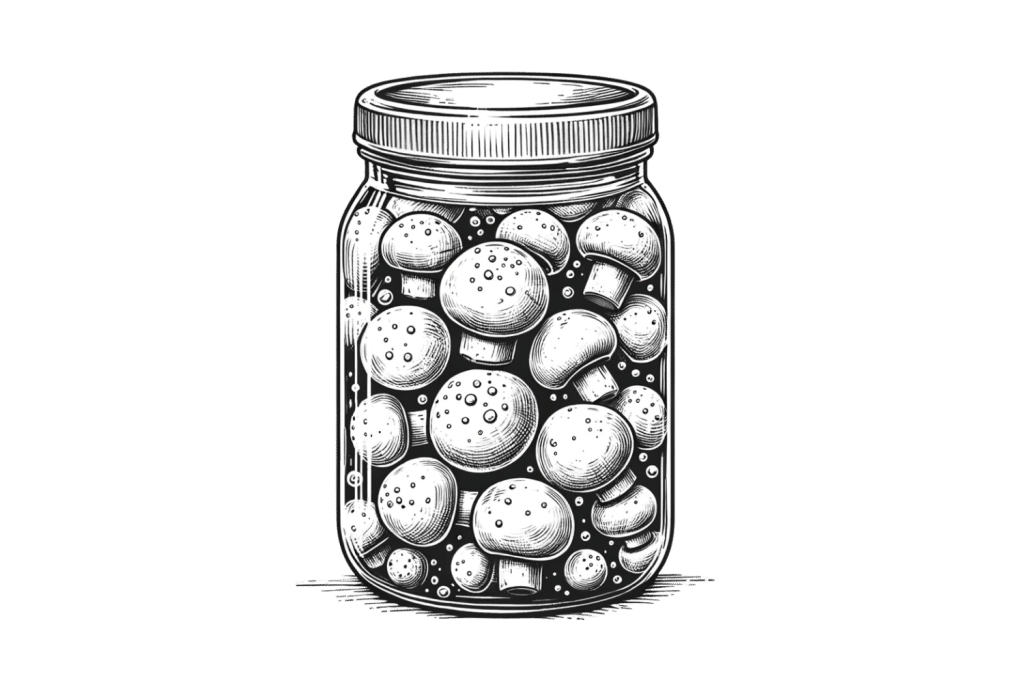
4. Making Stock
Making mushroom stock or broth is a great way to preserve mushrooms.
Clean and chopped mushrooms can be sautéd in neutral oil until they release their moisture and gain some color. Then add them to a saucepan with water or an existing broth and simmer for 30 to 45 minutes. The longer the broth simmers, the thicker the stock will be.
Cool the stock to room temperature before portioning it into containers or ice cube trays, then freeze. Mushroom stock will last in the freezer for well over a year.
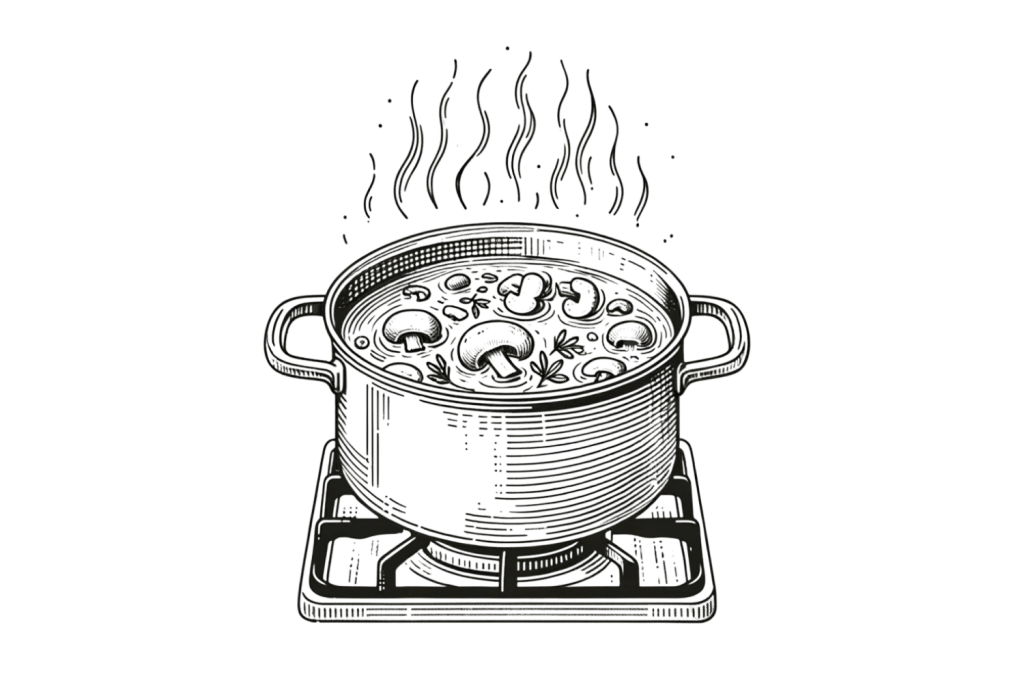
5. Chocolate or Gummies
One novel way to preserve mushrooms is to convert them into either gummies or chocolates. This is especially common with magic mushrooms.
The gummy base or chocolate will seal in the active ingredients and prevent them from breaking down under exposure to light and oxygen.
Learn how to make DIY mushroom chocolates and DIY mushroom gummies.
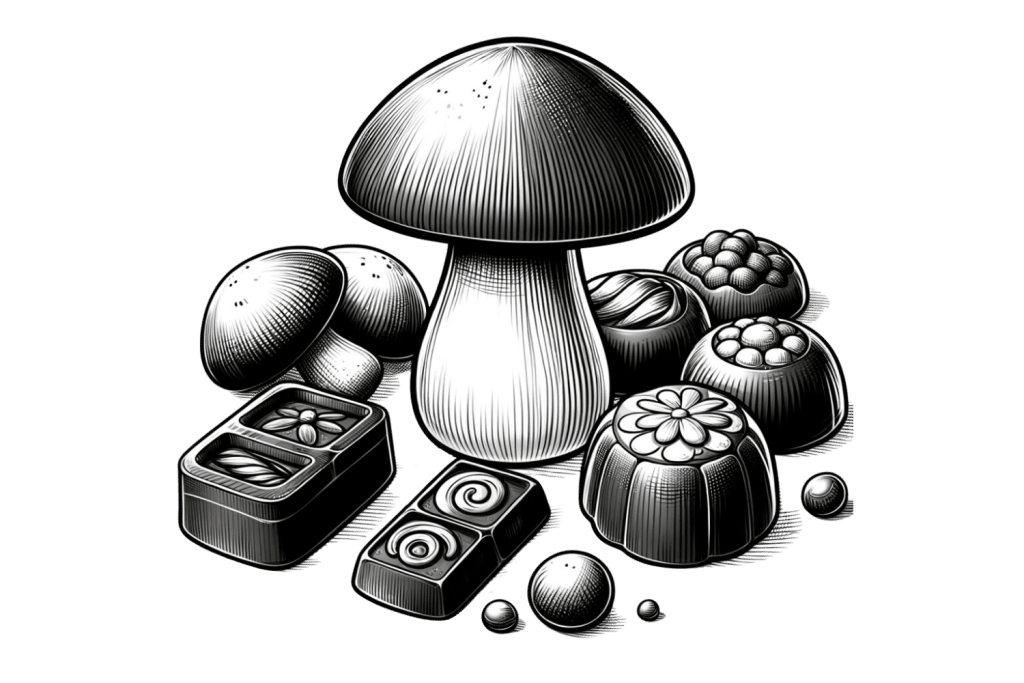
6. Mushroom-Infused Honey
Much like making chocolates or gummies, you can infuse your mushrooms in honey to preserve them long-term. Again, this is more relevant for magic mushrooms than functional mushrooms — but any mushroom can be preserved this way.
To make mushroom honey, start by drying your shrooms (the water in fresh shrooms will cause the honey to rot). Either grind the dried shrooms to a pulp or leave as is and cover them completely with honey. You’ll want to make sure at least ½ inch of honey extends over the top of the shrooms. Store in a container with as little air left on the top as possible.
Learn more about how to make psychedelic honey.
